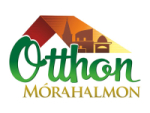While the Braille system received quick level of popularity with the blind pupils at the Institute in Paris, it had to achieve acceptance among the the sighted right before its adoption during France.
This assistance was necessary for the reason that sighted academics and leaders experienced ultimate handle in excess of the propagation of Braille means. Many of the academics at the Royal Institute for Blind Youth resisted understanding Braille’s method because they observed the tactile system of reading complicated to discover (Bullock and Galst, 2009). This resistance was symptomatic of the widespread perspective that the blind population experienced to adapt to the myperfectwords sighted planet instead than produce their individual instruments and methods.
About time, even so, with the escalating impetus to make social contribution possible for all, instructors started to appreciate the usefulness of Braille’s process (Bullock and Galst, 2009), realizing that obtain to looking through could assistance make improvements to the efficiency and integration of persons with vision decline. It took about 30 years, but the French governing administration eventually accredited the Braille technique, and it was set up throughout the country (Bullock and Galst, 2009). Although Blind individuals remained marginalized during the nineteenth century, the Braille technique granted them growing possibilities for social participation.
Do you advise approaches for composing an essay less than snug phrase restricts?
Most of course, Braille permitted individuals with vision reduction to study the very same alphabet utilised by sighted persons (Bullock and Galst, 2009), allowing them to participate in certain cultural activities earlier unavailable to them. Composed works, such as books and poetry, experienced previously been inaccessible to the blind populace with no the aid of a reader, restricting their autonomy. As books commenced to be dispersed in Braille, this barrier was diminished, enabling folks with eyesight loss to accessibility facts autonomously. The closing of the gap between the capabilities of blind and the sighted contributed to a gradual change in blind people’s status, lessening the cultural notion of the blind as primarily different and facilitating increased social integration.
The Braille program also experienced important cultural outcomes further than the sphere of composed lifestyle. Its creation later led to the improvement of a music notation system for the blind, while Louis Braille did not create this method himself (Jimenez, et al. , 2009). This growth assisted take away a cultural obstacle that experienced been introduced by the popularization of penned musical notation in the early 1500s.
When audio had formerly been an arena in which the blind could take part on equivalent footing, the transition from memory-dependent overall performance to notation-based performance intended that blind musicians were no lengthier capable to contend with sighted musicians (Kersten, 1997). As a final result, a tactile musical notation program turned needed for specialist equality between blind and sighted musicians (Kersten, 1997).
Braille paved the way for remarkable cultural improvements in the way blind men and women were being handled and the possibilities out there to them. Louis Braille’s innovation was to reimagine current examining systems from a blind viewpoint, and the good results of this invention essential sighted lecturers to adapt to their students’ fact in its place of the other way all over. In this feeling, Braille assisted drive broader social variations in the position of blindness. New accessibility applications provide simple advantages to all those who will need them, but they can also change the views and attitudes of all those who do not.
